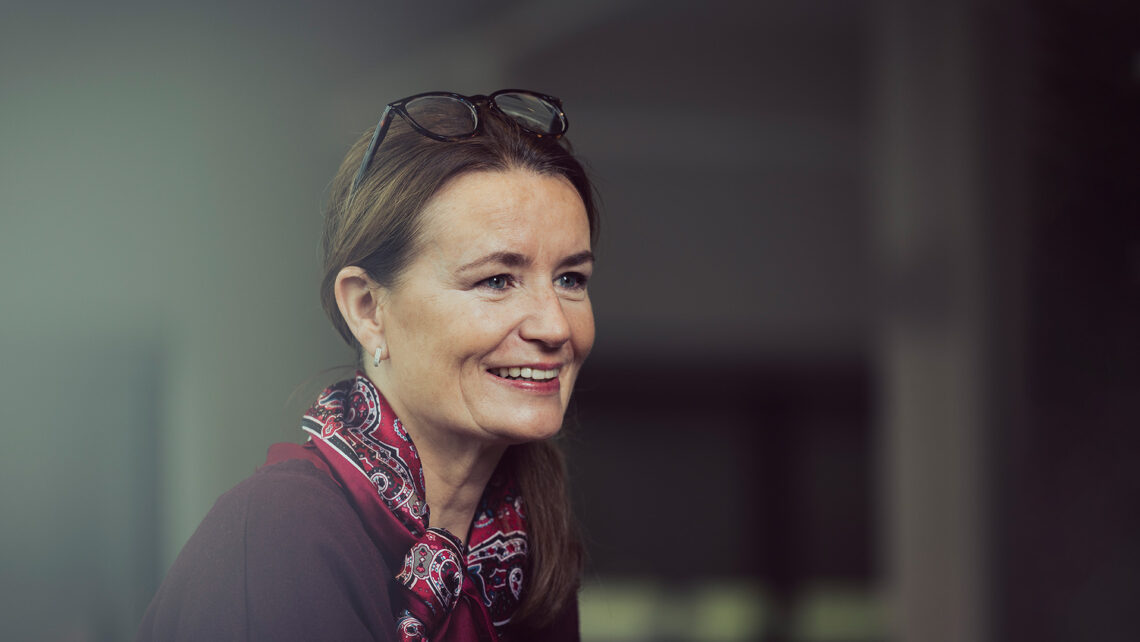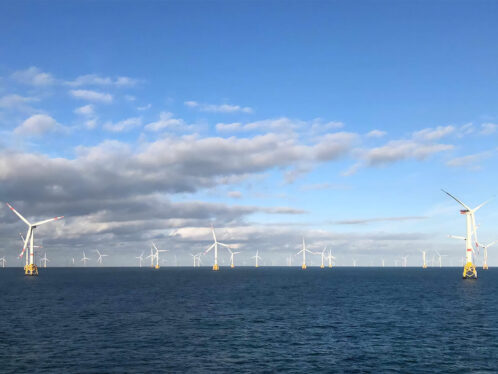
Forcing the shift towards renewables
Cutting carbon emissions is critical in the journey towards net zero. And it can be achieved in many ways – from boosting energy efficiency to using complex-sounding financial instruments.
Sustainability is a priority to most companies. In the pursuit of reducing their carbon footprint, some companies rely on offsetting or compensating for carbon emissions by strategies such as planting trees. Still, this does not get to the core issue: that carbon emissions need first to be reduced.
Companies that are serious about decarbonization often have already introduced practical steps as part of their plan to attain net zero. They invest in energy efficiency, embrace electrification and use sustainable energy sources. They have processes in place to cut energy consumption and emissions. However, no single method will achieve this. Just as a business needs separate revenue streams, so it needs a variety of ways to decarbonize.
“Cutting energy consumption is our main priority,” says Sofie Runius Cederberg, global strategic purchasing manager at SKF. “This helps to reduce both emissions and cost.”
Energy efficiency measures are “at the top of the agenda,” she says, because they lead to a tangible reduction in energy use, which in turn helps to cut emissions.
“We want to make sure the whole supply chain is working towards decarbonization,” Cederberg says. “It should be part of everybody’s daily activities, but the maturity varies depending on factors such as what industry segment they are in, if they have made public commitments to reduce their emissions and if their owners, shareholders, customers or suppliers are pushing them to decarbonize.”
Many corporations have set themselves challenging net zero targets. SKF, for instance, plans to decarbonize by 2030 and attain a net zero supply chain by 2050. In addition, it is one of around 400 members of the global renewable energy initiative RE100, all of whom are committed to switching over to using renewable energy.
“Signing up to RE100 is a public statement that you are committed to switching to renewable electricity,” Cederberg explains.

Guarantees of Origin
One way companies demonstrate their commitment to renewable energy is by buying Guarantees of Origin – certificates that prove the kWh produced come from a renewable source such as solar, wind, geothermal, sustainable hydropower or biomass. This can be achieved through “bundling” – buying a “green” tariff, where a user buys the energy and certificates at the same time. The certificates can also be purchased separately, “unbundled”.
When we come together, we can make a difference.
Sofie Runius Cederberg, global strategic purchasing manager at SKF
Globally, these certificates go by many different names; see fact box below. One of RE100’s challenging criteria for members is that assets used to generate certificates should be less than 15 years old. “It’s a way of ensuring that we continue to expand the capacity of renewables,” says Cederberg.
To satisfy this, members must prove that certificates come from newer assets. In this way, companies can help to expand the capacity of renewable energy in the grid. This involves collaborating closely with developers of these new assets, to help ensure that the assets are viable.
“When we come together, we can make a difference,” says Cederberg. “And that word – ‘together’ – is very close to our hearts. We want to spread the word about this because everyone can make an impact by collaborating and partnering with others.”
Securing certificates from these new assets can be achieved through a complicated-sounding financial mechanism called a virtual power purchase agreement (VPPA). Here, an energy user continues to receive energy (or “electrons”) from its suppliers. However, certificates are now sourced through the VPPA, which is tied to a new – often not yet built – renewable energy asset such as a wind farm or a solar plant.
What’s a VPPA?
Using a financial mechanism to decarbonize, in a real and tangible way, may sound even more conceptual than offsetting. However, VPPAs help to ensure that huge, often risky green energy projects actually come to fruition. This then helps to boost energy generation from sources such as wind turbines and solar cells. “A VPPA is an instrument to get decarbonization going,” Cederberg says.
A VPPA is a long-term purchase agreement – typically 10 or 15 years – though it does not involve any physical electricity supply. SKF recently signed a 15-year VPPA for a planned solar project in La Mancha in Spain. It will buy the majority of the certificates issued by the solar farm, which is due to begin operations in August 2024. This is equivalent to one-third of the electricity used in all its European facilities.
“By us signing up and committing long-term, the project developer knows they have a customer for 15 years,” says Cederberg. “And we have a new way to obtain high-quality certificates.”
Because the European energy market is interconnected, certificates generated in Spain can be used across Europe, in countries such as Germany and Italy. By relying on certified renewable energy, SKF sets a positive example for the industry, emphasizing the key role businesses play in accelerating the transition to a low-carbon economy. However, in order to make a real difference, all companies dedicated to sustainability must play their part.
“Everybody should sign up now,” Cederberg says. “It’s not a side project, or something you can opt out of. You need to treat it as an integrated part of the business. Our suppliers need to step up, and we need to put pressure on them. Our customers, demand us to ensure a carbon-free supply to them. Our investors and shareholders expect us to decarbonize and so do our employees.”

Customer benefits
VPPAs help to secure certificates; energy efficiency helps to cut energy bills. But how do downstream customers rate these initiatives? In short, why should they care?
“We’re constantly rated on our sustainability,” says Cederberg. “Customers are assessing our performance; they want suppliers who can help them to decarbonize.”
End customers such as automotive companies have stringent decarbonization targets of their own and will seek out suppliers who can help to deliver them.
“If companies like BMW and Volvo are buying from us, they want to know which factory a product was made in and what its emission factor is,” Cederberg says. “They want to know what we’re doing to cut our emissions, so we need to do those calculations for every plant and on a very detailed product level.”
The main focus of decarbonization is usually Scope 2 emissions, the ones that a user has direct control over, such as the energy they buy. Beyond that are Scope 3 emissions, which come down the supply chain.
“For customers, we are part of their Scope 3 emissions,” she says. “They don’t want to import our emissions into their business. That’s why it’s important that we prove we’re meeting our decarbonization targets.”
Future moves
SKF hopes to sign a new VPPA in Europe this year, further demonstrating its commitment to renewable energy. In the US, it has signed two similar agreements to secure Renewable Energy Certificates (RECs) against the energy used in its North American production facilities until 2037.
Similar schemes are also available for India, which accounts for SKF’s largest carbon footprint in Asia, and the company hopes to secure a deal there this year. “It will be for a new-build facility in India,” Cederberg says. “We’ll then be able to use the certificates across the country.”
For now, VPPAs and related arrangements, such as the RECs in the US, will be just one element of SKF’s decarbonization strategy. While they help to secure certificates, there is still an element of risk to them, as they involve a 15-year contract. In reality, they need to be blended with other approaches. “We need to have a portfolio of tools, such as different price structures and technologies that can help us reach our decarbonization goal,” says Cederberg.
Securing VPPA deals
The La Mancha solar plant in Spain is owned by Italian energy company Enel; the US facility is owned by Clearway. However, as SKF is not an expert in the energy market, it used global energy consultancy Schneider Electric as an adviser in these and similar deals. “We needed a third party who has access to all the right information,” says Sofie Runius Cederberg, global strategic purchasing manager at SKF.
Schneider knows all the developers and the details of current and emerging projects. It presents a shortlist of opportunities to SKF, which is likely to be one of a number of suitors in any project. With its strong profile in sustainability and good financial rating, SKF is an attractive buyer, Cederberg says.
“By showing that we’re sincere in our decarbonization journey, the developer feels secure that they can start building,” she says. “They can then accelerate the project, knowing they have a serious customer who wants to commit long term.”
However, making VPPAs (virtual power purchase agreements) work goes beyond a single contact with Schneider. It requires an internal team effort involving departments such as purchasing, treasury, legal and sustainability. “Because a VPPA is a financial instrument it needs treasury competence,” Cederberg says. “But we also need to ensure that it meets our sustainability goals.”
At the end of the day, though, the reason for using VPPAs is to drive the use of renewable energy. “We want to be part of that transition and make sure more renewable energy flows into the grid network so we can all move away from fossil fuel energy,” she says.
Guarantees of Origin
Certificates that prove electricity comes from renewable sources are known as Guarantees of Origin (GOs) in most European countries. In the United Kingdom, they are called Renewable Energy Guarantees of Origin (REGOs), and in the United States and Canada they are called Renewable Energy Certificates (RECs).
International RECs (I-RECs) as well as Tradable Instruments for Global Renewables (TIGRs) can be found in several Latin American, African and Asian countries.
A few countries have their own national mechanisms. These include Chinese Green Energy Certificates (GECs), Australian Large-scale Generation Certificates (LGCs) and Japanese J-Credits, Green Energy Certificates (GECs) and Non-Fossil Certificates (NFCs).




